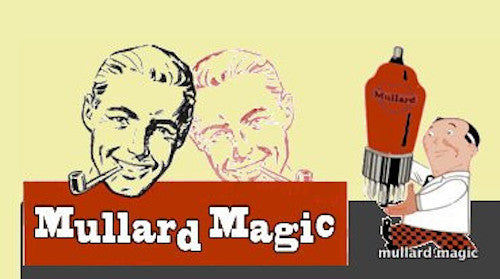
NATIONAL RADIO COMPANY
Share


The National Radio Company had a 77 year history, from 1914 through 1991. National Radio was first incorporated in 1914 as the "National Toy Company". By 1916 they had changed their product line to include household goods so they changed their name to the "National Company, Inc." A further product line change ocurred during the 1920s when National received their break from the Cardwell company. The Cardwell capacitor representative in the Boston area, George Q. Hill, found that he could sell more capacitors then the Cardwell could supply so National began to supply him and sold all that they could manufacture. By 1923 the National inventory included trade marked toys, Magnetic Dancers, Roberts Mixers, DMB Covers, Victrolene, and radio components.
In 1924, two engineers from Harvard University approached National to manufacture components to their specifications, their research proved that the typical RF transformers of the day were too tightly coupled for best performance. The National Regenaformer kit for home construction of the Browning-Drake Receiver was the result of this partnership. The circuit was basically a neutralized tuned RF amplifier followed by a regenerative detector. National provided the coils, capacitors, knobs and their famous "Velvet Verniers". Based on the success of this venture, National made the design, manufacture and sales of radio equipment their principle line of business.
By the early 1930's National had established a firm reputation with the amateur radio community and started exploring the potential of the VHF bands. The SRR (Super Regenerative Receiver) was one of their first products for the VHF spectrum. The superregenerative circuit was characterized by high sensitivity. Only one stage of audio was required for loud speaker volume. The regenerative detector was run with heavy feedback broken only by the quench oscillator built into the circuit. The SRR was sold as a VHF/5 meter radio but coils were available for the lower frequency HF bands. On these frequencies it would work with the quench oscillator disabled as a straight regenerative detector plus one stage of audio. Again, National was marketing to the cost conscious ham that wanted one radio that could be upgraded to fill multiple roles.
National's wooing of the VHF enthusiast continued with the introduction of the 1-10 in 1938 followed by the 1-10A. These superregenerative VHF receivers were sold with coils covering 1- 11 meters (27MHz through 290MHz). They incorporated the HRO style dial and acorn tubes in the RF and detector stages.
In 1935 National introduced their top-of-the-line HRO receive - a Hell of a Rush Order. This radio included two RF stages and a crystal filter. The distinctive HRO dial allowed KC (KHz) resetability and was a National trademark into the 1960s. With few changes other than to keep up with changing tube technology, this same basic design survived for over 20 years.
National made a brief foray into the transmitter market in the late 1930s. Primarily these transmitters were marketed as drivers for amplifiers built from National components. The NTX-30 is one example. It was designed with a 6L6 oscillator running on 80 meters followed by push button selectable multiplier stages for output on 40, 20 or 10. The final was a pair of 6L6s paralleled to run about 60 watts input. It was also available as the NTE with a speech amplifier replacing the 6L6 final.
One of National's final examples of state of the art innovation was introduced in 1965. The HRO 500 was an all transistor, fully synthesized receiver covering 5KHz through 30MHz in 60 500KHz bands. The HRO style dial is direct KHz readout. No longer was a conversion scale or chart required. Upon it's introduction, Popular Electronics Magazine reviewed it as possibly the best amateur receiver ever.
National's amateur radio equipment lineup throughout the 1930's reflected innovative electrical and mechanical engineering. They successfully answered the needs of the radio amateur which resulted in them becoming a household name throughout the 1930s to the 1970s. The changing market meant that during latter half of the 1970s and 1980s National existed only as a government contractor. In 1991 the last vestiges of National disappeared in a bankruptcy auction - a sad end to a proud name..
